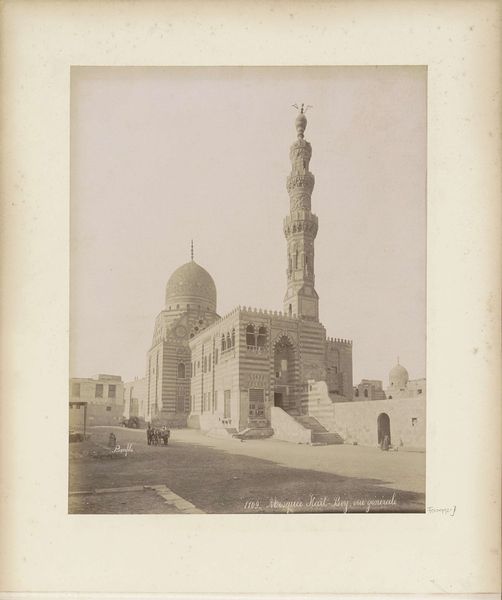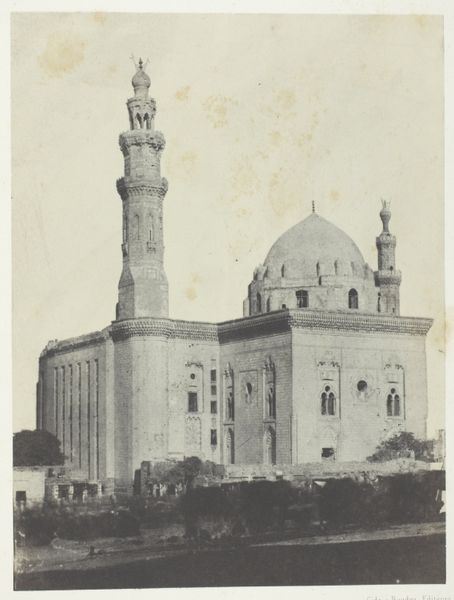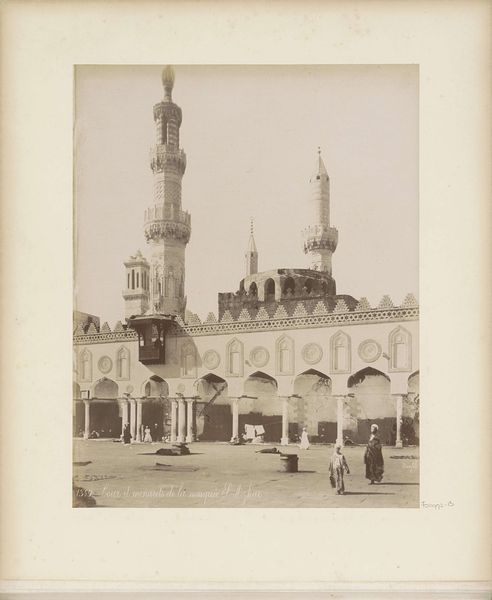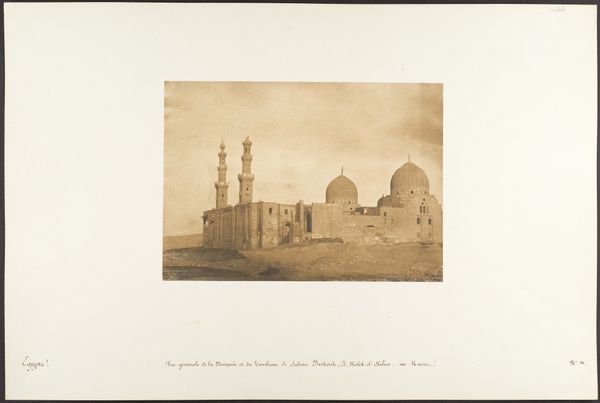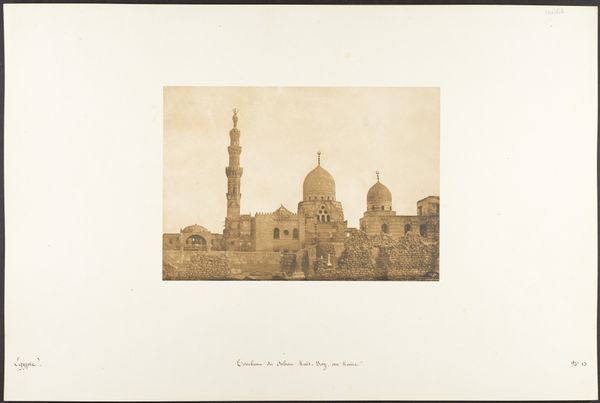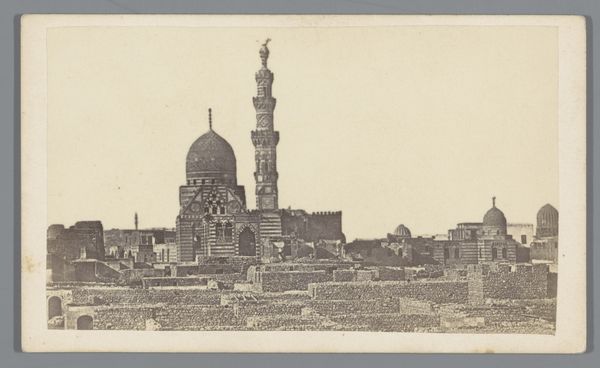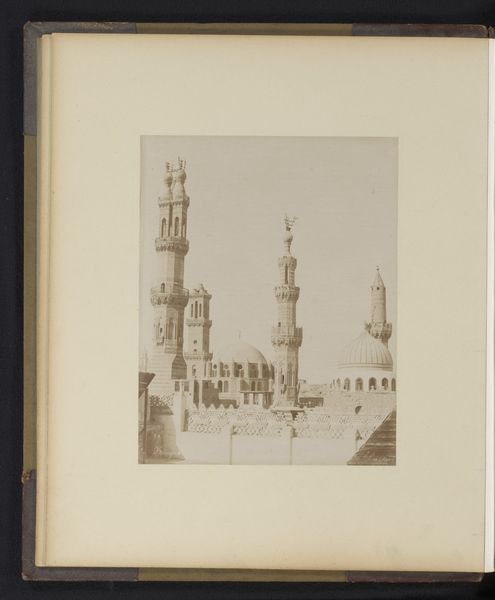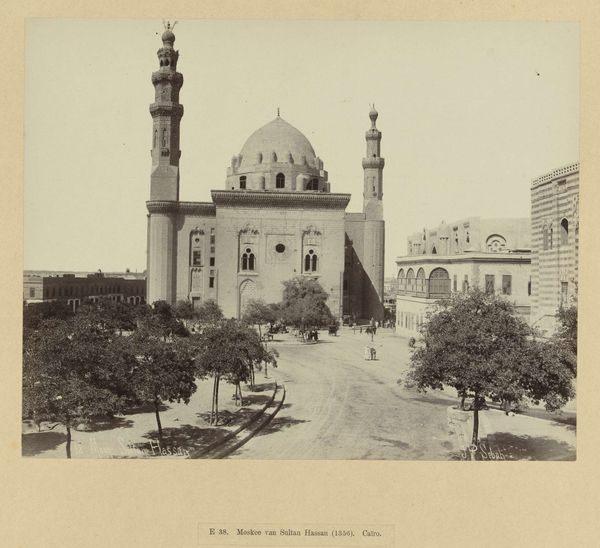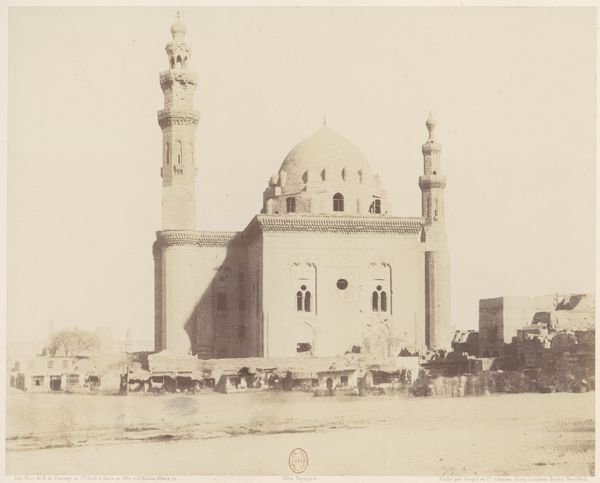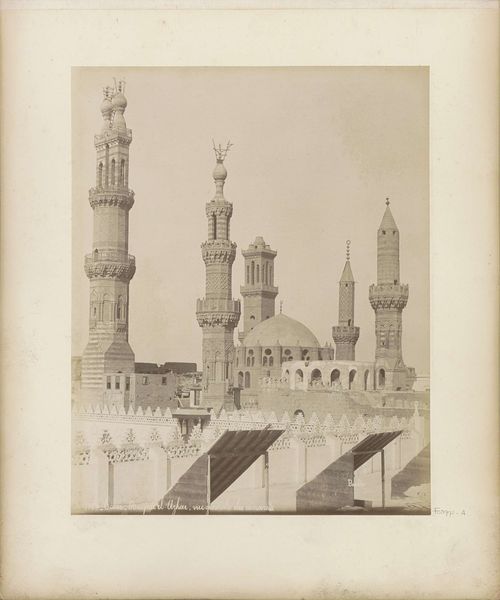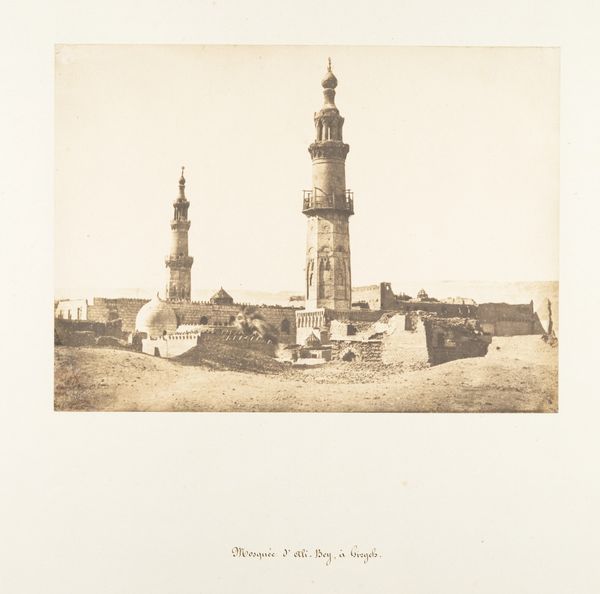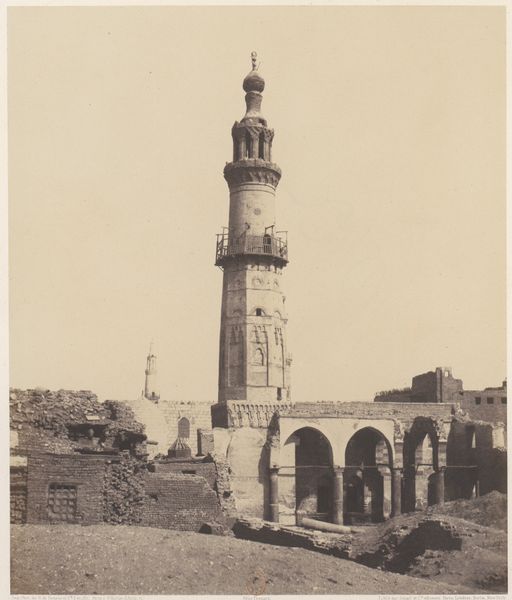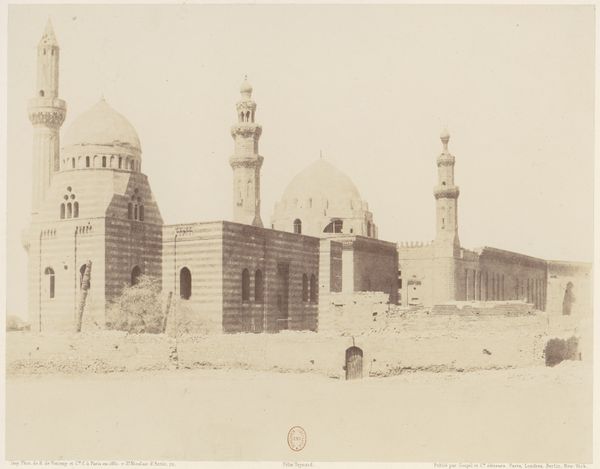
Mosquée de Sultan Haçan, Place de Roumelich, au Kaire 1849
0:00
0:00
photography, gelatin-silver-print, architecture
#
landscape
#
photography
#
orientalism
#
gelatin-silver-print
#
cityscape
#
islamic-art
#
architecture
Dimensions: Image: 8 1/2 × 6 7/16 in. (21.6 × 16.3 cm) Mount: 12 5/16 × 18 11/16 in. (31.2 × 47.5 cm)
Copyright: Public Domain
Curator: Welcome. We're standing before Maxime Du Camp's photograph, "Mosquée de Sultan Haçan, Place de Roumelich, au Kaire," a gelatin-silver print dating back to 1849. It resides here at The Metropolitan Museum of Art. Editor: The sheer massing is what strikes me first. The tonal range, that sepia wash – it almost abstracts the complex architecture, creating monumental shapes within the frame. There's an interesting interplay of shadow and light defining its cubic form. Curator: Indeed. Du Camp was among the first to use photography to document ancient monuments and cultures, part of the surge in Orientalism during that era. The Sultan Hassan mosque, an iconic symbol of Cairo, visually conveys not only architectural prowess but also the powerful cultural and spiritual influence of Islam across time and place. Editor: I’m particularly drawn to how the composition isolates the mosque against what appears to be a minimalist landscape, which sharpens its outline and simplifies the visual narrative. We almost get a graphic reduction of form and cultural objecthood in one fell swoop. What could be read in the context of this historical, cultural positioning? Curator: I'd say it’s crucial to observe that isolation in the frame and the time when it was created; 1849. This photographic perspective emphasizes the imposing permanence of Islamic identity amidst an environment potentially interpreted as undefined or perhaps implicitly "other." The architectural elements become symbols of steadfast faith and continuity in a rapidly changing colonial world. Editor: Right. The contrast accentuates a cultural divide as perceived, captured, and reproduced by European eyes through photography. So the work embodies the visual structure inherent within colonial viewpoints, highlighting dominant and subordinate entities. Curator: Absolutely, it is a photograph that makes us examine what symbols we project on this architectural wonder. What lasting images are reproduced and memorialized across time. Editor: Considering Du Camp's technique alongside these contexts has provided some additional interesting layers to view. Thank you for this fresh look at this gelatin print!
Comments
No comments
Be the first to comment and join the conversation on the ultimate creative platform.
